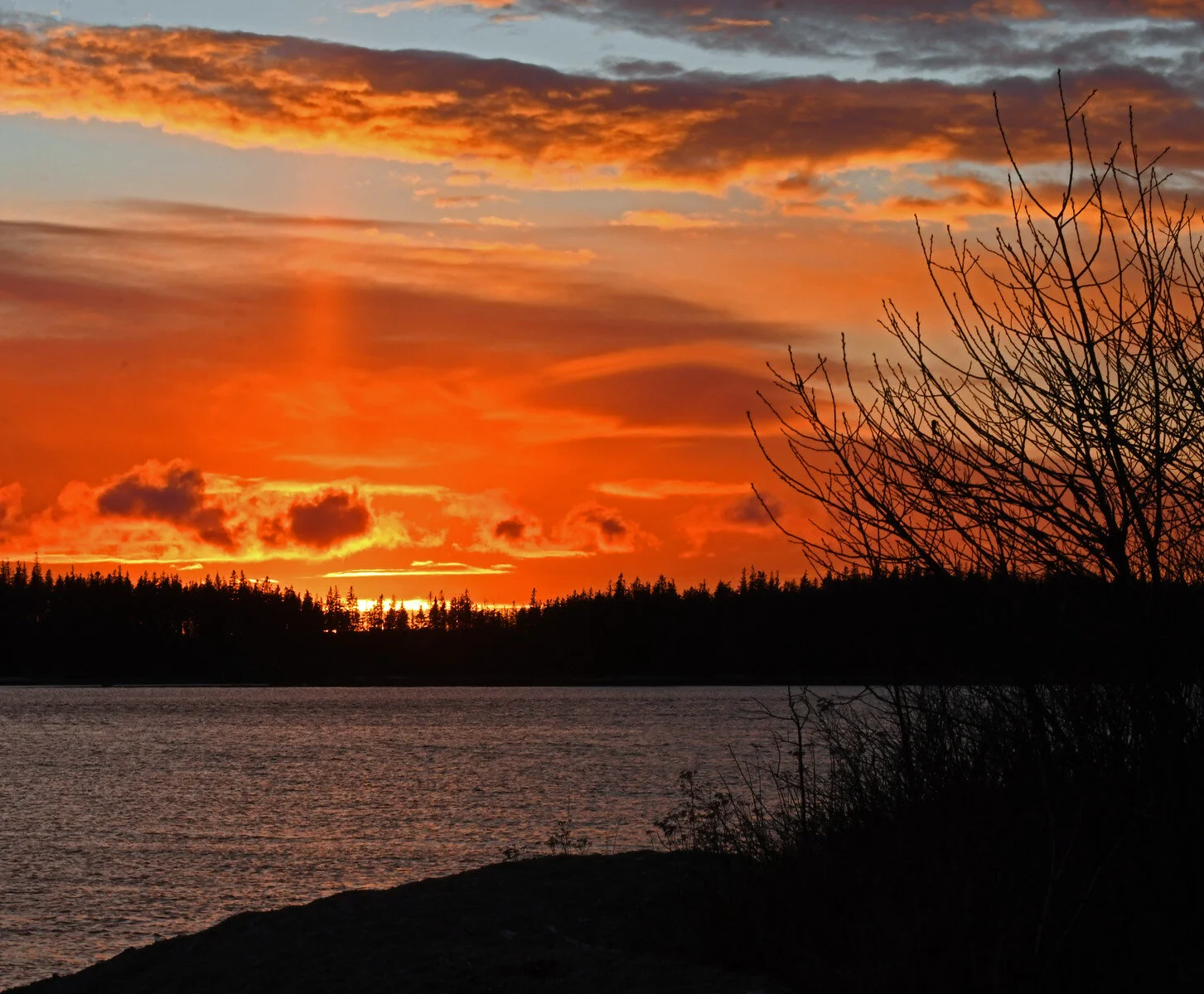Here, we’re looking southwest out of Great Cove yesterday afternoon. The day is steely gray, with virtually no wind to disturb the resting ebb tide. The horizon hides in the sky where there are no islands to break the plane.
Across the peninsula, the water in Naskeag Harbor is as still and dark as a garden pond, which is all the better for“Miss Millie” to show off her clean lines.
(Brooklin, Maine)
































































